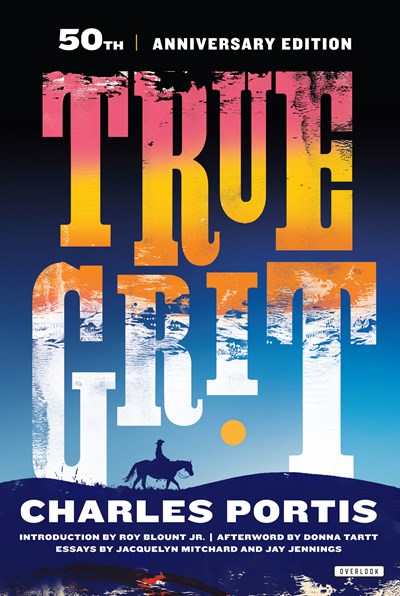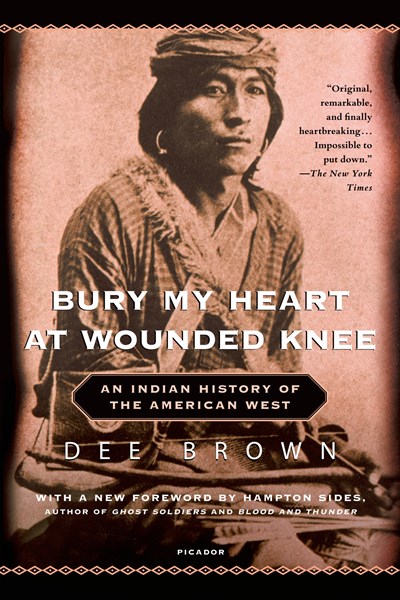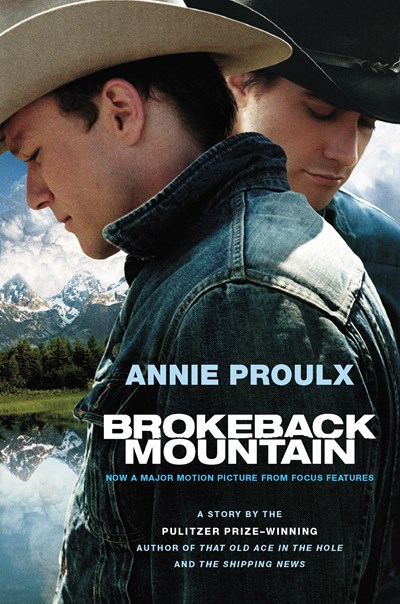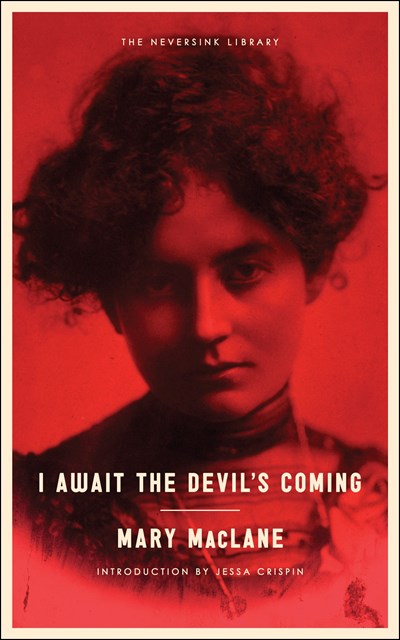Claudia Cravens’ debut novel, Lucky Red, is an exceptional historical tale of sex work and queer desire on the American frontier. Recently orphaned Bridget Shaughnessy, 16, lands in Dodge City, Kans., in 1877. Her innocent look and flaming red hair catch the attention of Lila and Kate, madams of the refined Buffalo Queen brothel. There, Bridget discovers unlikely romance with Spartan Lee, a gender-bending outlaw chaser. Spartan, meanwhile, is working a con that sweeps up Bridget and the rest of her colleagues at the Buffalo Queen. Cravens peppers the thrilling plot with delicious language (Bridget’s clients are “a series of hats and mustaches”) and her sensitive portrayal of Bridget’s uncertainty over her sexuality resonates. It's a western for the modern era.
Few genres are more tightly defined than the western, with a very short list of traditional tropes. We have our frontier setting, consisting of saloons, homesteads, dusty streets, and the open range. We have our characters: the man in the black hat, the man in the white hat, the good-hearted woman, the arm of the law, and, if we’re lucky, one or two surprising frontier weirdos. And we have our plot points: a stranger comes to town, someone tries to take what isn’t theirs, and through a series of gunfights and chases on horseback, one man must stand up for what’s right. This formula has its charms—galloping over the prairie can be gorgeous and exhilarating, and those wacky side characters can be an awful lot of fun—but it’s also very limited, traditionally centering a white, straight, morally-upright man, and sparing no thought for the perspectives or experiences of the characters around him.
With such a wealth of unexplored perspectives and a ridiculously entertaining menu of settings, props, and action sequences (Canyon shootout, anyone? Moonshine-soaked barn dance? Or how about a cattle-roping lesson gone hilariously awry?), non-traditional westerns are just begging to be written. Despite what mid-century Hollywood would have us believe, the West was an incredibly diverse place, where minorities, misfits, and outcasts of all stripes could find a fresh start. Economic opportunity, a highly demanding environment, and looser social rules than back east or in the old country offered many people new paths, paved with fresh choices for how to make their way in the world.
In these 11 subversive works, people who are often denied agency in traditional westerns—women, people of color, LGBTQ people—insist on telling their own stories. Letting people usually treated as background characters speak for themselves makes the whole genre not just truer to life, but richer, deeper, and all the more unique.

1. True Grit by Charles Portis
After her father is killed by the coward Tom Chaney, 14-year-old Mattie Ross sets out to bring Chaney to justice by whatever means necessary. She hires Marshal Reuben “Rooster” Cogburn for the job, and they set out from Ft. Smith with Texas Ranger LaBoeuf to track down Chaney and his gang. Mattie is a truly remarkable protagonist: she arrives in town alone and utterly confident in her mission; she handles money with great skill, driving hard bargain after hard bargain against grown men who consider it their right to get one over on a young girl; though Cogburn and LaBoeuf try to leave her behind multiple times, she catches up to them again and again. Her insistence on being part of the “man’s world” of outlaw-catching, along with her hard-bitten, highly pragmatic narration, make Mattie Ross a truly subversive heroine.

2. Bury My Heart at Wounded Knee by Dee Brown
At no time in our history was the romantic myth of the West more powerful—and more totally disinterested in anyone who wasn’t a white man—than in the decades leading up to the publication of this nonfiction classic. Brown’s chronicle delivers a resounding refutation of this myth of the West as a place where plucky heroes made their way with nothing more than good, old-fashioned grit. Instead, Bury My Heart at Wounded Knee reframes the story of the West by centering the experiences of Native Americans who were displaced by westward expansion, suffering at the hands of many of these so-called “heroes” of American history. Brown asks us to reexamine our history from—quite literally—the opposite direction, saying of this book, “Americans who have always looked westward when reading about this period should read this book facing eastward.”

3. "Brokeback Mountain" by Annie Proulx
No one does bittersweet quite like Proulx, and “Brokeback Mountain” is a masterpiece of hurts-so-good, melancholic ache. Ennis del Mar and Jack Twist are two ranch hands who come together one summer as they tend a flock of sheep high up on the eponymous mountain. Sharing a tent in this isolated setting, their attraction starts out casual, little more than a way to pass the long nights, but it soon becomes something much deeper. The two men marry and start families, as is expected of them. But they can’t keep away from each other, stealing moments here and there over the course of two decades, the agony of longing and loneliness culminating in the all-time heartbreaking line, “I wish I knew how to quit you.”

4. I Await the Devil’s Coming by Mary MacLane
Diarist Mary MacLane was a genius and she knew it. She wished everyone else knew it too, but the people of Butte, Mont. simply could not recognize the depth and brilliance of her philosophy. In this confessional work, written in 1902, the 19-year-old MacLane promises herself to the Devil over and over again, begging him for happiness, understanding, and relief from a dull life spent wandering the plains while she works on her philosophy. The prose is raw and daring, as is MacLane’s bald-faced assertion of her own intelligence, sexuality, and right to live life to the fullest and entirely on her own terms.
5. Whiskey When We’re Dry by John Larison
When 17-year-old Jessilyn Harney finds herself orphaned on her family’s homestead and in danger of starvation and harm from her predatory neighbors, she takes matters into her own hands. She cuts off her hair, binds her chest, and sets out to find her outlaw brother, Noah, and bring him home. A talented sharpshooter determined to outwit those who underestimate her, Jessilyn must reckon with her brother’s outlaw activities and questions of her own identity to become the hero of her own story.
6. Outlawed by Anna North
Married to a man she loves and devoted to her work as an apprentice to her mother, a respected midwife, 17-year-old Ada’s future looks bright. But in this alternate-historical United States, a woman’s fertility is her highest virtue; when a year of marriage passes with no pregnancy for Ada, she must flee town or risk being hanged as a witch. She joins the Hole in the Wall Gang, led by a charismatic former preacher known as The Kid, and they set out to change the future for women like her. While the setting gives Outlawed a bit of Handmaid’s Tale flavor, it also throws the disposability of women in typical westerns into sharp relief. Ada’s faith in herself and her own intelligence pushes back hard against typical tropes of homesteaders’ wives as meek helpmates, placing women’s experiences of their own bodies front and center.
7. Inland by Téa Obreht
Obreht weaves together two voices rarely heard in a traditional western: a woman left behind, and a Muslim immigrant from the Ottoman Empire. Nora is waiting for her husband, who has set out into the Arizona desert in search of water for their homestead. In a typical western, a woman left without male protection provides the impetus for a male protagonist’s adventure; her role is to suffer great violence so that he may redeem them both through vengeance. But Obreht isn’t interested in using Nora as a prop in someone else’s story, instead focusing on her rich inner and spiritual life. Meanwhile, Lurie, a former outlaw haunted by ghosts, travels with the U.S. Camel Corps. On the run from a marshal, Lurie forms an unexpected relationship with a dromedary named Burke. Obreht’s western is a mosaic of unexpected perspectives and experiences, drawn from true but little-known history of the West.
8. Upright Women Wanted by Sarah Gailey
This speculative western begins when Esther Augustus runs away from home with the Librarians to escape a marriage her father arranged for her to the man who had previously been engaged to Esther’s lover, Beatriz, before she was executed for the possession of resistance propaganda. The Librarians are an ostensibly nun-like organization charged with distributing government-approved books in small towns throughout the West. When Esther joins their order, however, she discovers that the Librarians are far more than meets the eye: queer, subversive, and committed to making sure that women are kept safe in a hostile world.
9. How Much of These Hills Is Gold by C. Pam Zhang
In the twilight of the California Gold Rush, newly orphaned siblings Sam and Lucy journey through the hills searching for a burial site for Ba, their recently deceased father. What was supposed to be a land of abundance for this immigrant family becomes a treacherous landscape haunted by buffalo bones, tiger paw prints, and specters of the past they shared and the future Sam and Lucy should have had. With densely lyrical prose, Zhang brings to life the particular struggles of Chinese immigrants in the West, encompassing both a longing for home and the question of where immigrants are allowed to belong.
10. Book of the Little Axe by Lauren Francis-Sharma
When Trinidad changes from Spanish to British rule, Rosa Rendón and her family must flee in order to maintain their freedom as Black property owners. By 1830, Rosa is living with the Crow Nation in Bighorn, Mont.; she is married to chief Edward Rose, and her son Victor is ready to set out on a vision quest to become a man. To help him complete his journey, Rosa must retrace her own story and take Victor back to his roots. Book of the Little Axe centers a multilingual Trinidadian woman’s quest to understand and come to terms with her own roots within the violent landscape of colonialism.
11. The Thousand Crimes of Ming Tsu by Tom Lin
Sometimes, the best thing an author can do for an underrepresented character is to let them have a rip-roaring, violent, thrilling adventure all their own. The Thousand Crimes of Ming Tsu is exactly this: an action-packed tale of magic, star-crossed lovers, and much-needed revenge starring Ming, the orphaned child of Chinese immigrants. Raised as a deadly enforcer in a California crime syndicate, Ming falls in love with Ada, the daughter of a railroad magnate. Soon after, Ada is kidnapped by her father’s henchmen and Ming is pressed into service on the Central Pacific Railroad. Ming partners up with the prophet, a blind clairvoyant, and they set out to rescue Ada and exact revenge. Lin’s novel not only rejects stereotypes of Chinese immigrants as anonymous, passive workers, it pushes back hard with an explosively inventive tale.








